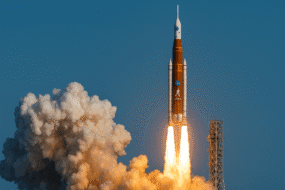On May 25, 2025, Indian Air Force pilot and astronaut Group Captain Shubhanshu Shukla entered quarantine alongside his international crewmates, preparing for a momentous mission. Set to launch no earlier than June 8, 2025, aboard a SpaceX Falcon-9 rocket, the Axiom-4 (Ax-4) mission will take Shukla to the International Space Station (ISS), making him the first Indian astronaut to reach the ISS.
This ambitious mission, a joint effort by ISRO, NASA, ESA, and Axiom Space, comes with a price tag of Rs 550 crore. But far from being a simple journey to space, it represents a massive leap forward for India’s Gaganyaan project, the country’s first planned human spaceflight mission.
A Mission with Purpose
During the 14-day stay at the ISS, Shukla will lead 12 Indian scientific experiments, including studies on biology, muscle health, and food sustainability in space. This mission is about much more than visibility — it’s about learning, leading, and laying the foundation for the future of Indian human space exploration.
Why This Rs 550 Crore Investment Matters
Critics may question the cost, but the Ax-4 mission is a strategic investment. Here’s what India gains:
✅ Real Astronaut Training:
Shukla will gain first-hand experience with space living, equipment handling, and emergency protocols — knowledge critical for the 2026 Gaganyaan mission.
✅ International Collaboration:
Partnering with NASA, ESA, and Axiom Space strengthens India’s tech capabilities and opens doors to future joint ventures.
✅ Groundbreaking Experiments:
From growing algae to creating oxygen in space, India’s 12 research projects aim to solve key space challenges while improving life on Earth.
✅ STEM Inspiration:
Shukla’s mission will inspire millions of young Indians to pursue science, with live ISS interactions planned with schoolchildren.
Highlights of India’s Space Experiments
🔬 Algae-Based Food Systems: Microalgae may offer astronauts fresh, nutritious food in space.
🍃 Cyanobacteria for Oxygen: These tiny organisms can purify air and could support long-term human survival in orbit.
💪 Muscle Atrophy Research: Understanding muscle loss in space can help people with similar issues on Earth.
🌱 Space Farming: Green gram and fenugreek are being tested for zero-gravity growth, pushing toward self-sustaining life in space.
🧬 Tardigrade Studies: Known for surviving extreme conditions, tardigrades may unlock secrets about life beyond Earth.
🩺 Astronaut Health Monitoring: Five experiments will analyze space’s effects on immunity, cognition, and physical well-being.
Building Blocks for Gaganyaan
ISRO’s Rs 20,193 crore Gaganyaan project aims to send three Indian astronauts into orbit for three days in 2026. Ax-4 is a critical rehearsal that will:
🚀 Validate crew management strategies
🔬 Test life support systems
⚠️ Enhance mission safety protocols
🌍 Align ISRO with global spaceflight standards
The Journey of 1.4 Billion People
As Shukla put it during the mission send-off, “This is the journey of 1.4 billion people.” His words symbolize the hopes, talents, and ambitions of an entire nation. With Ax-4, India is not just participating — it’s leading in space exploration.
The countdown to launch is on. As the world watches, India prepares to mark another milestone in its space journey — one powered by vision, collaboration, and the dream to explore the final frontier.
















